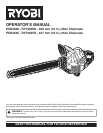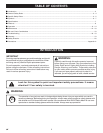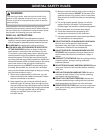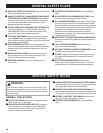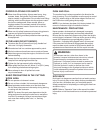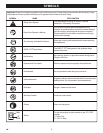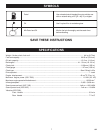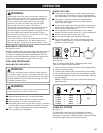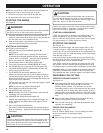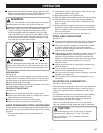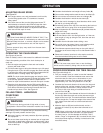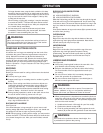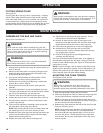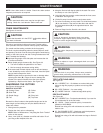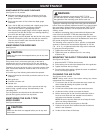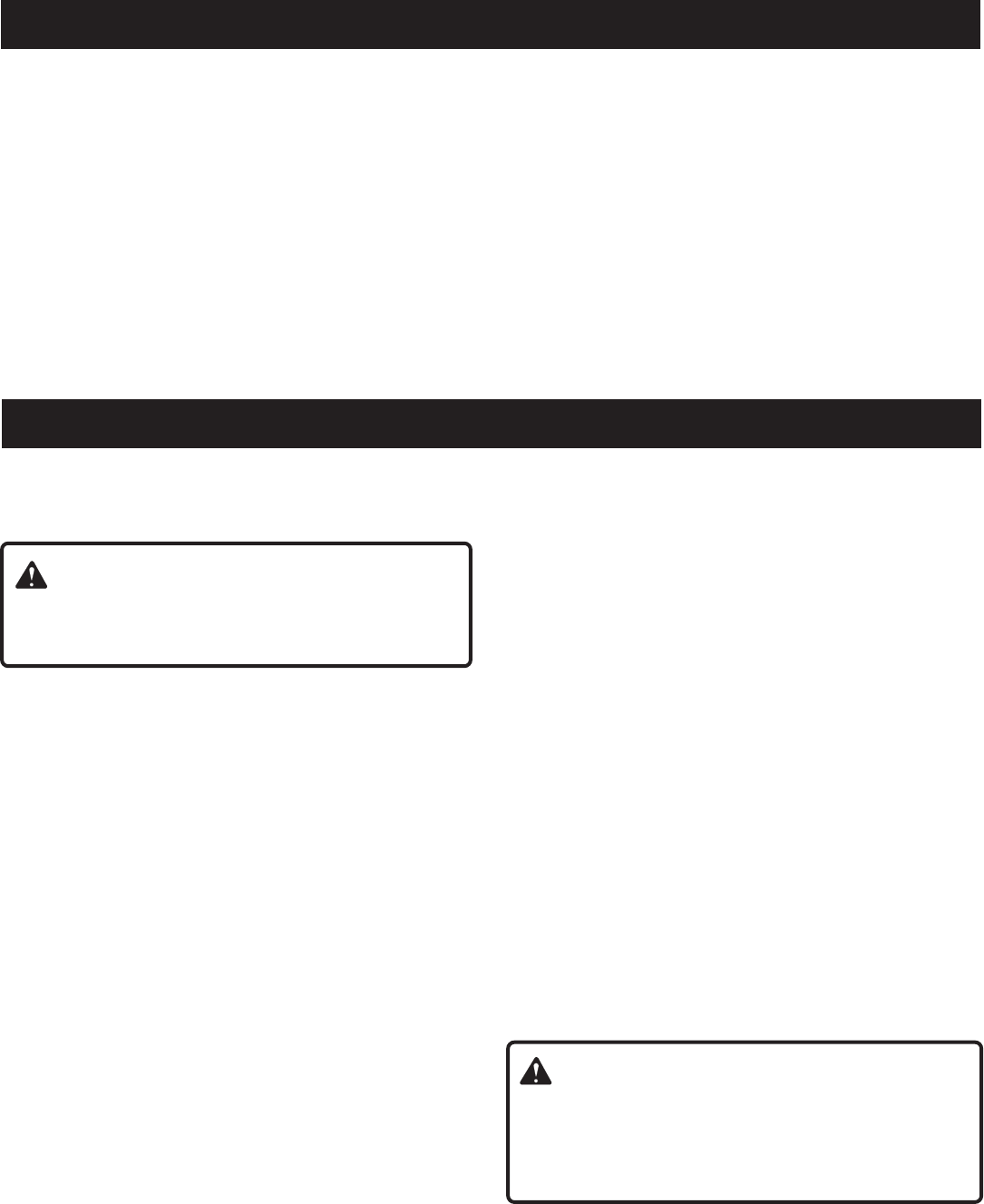
8
UK
For your safety, study this entire manual before operating the
saw. Pay particular attention to the precautions and instructions
listed in the operator’s manual.
WARNING:
The warnings and instructions in this section of the
operator’s manual are for your safety and to prevent
serious personal injury.
UNDERSTANDING YOUR CHAINSAW
SAFETY DEVICES
SAFE-T-TIP® ANTI-KICK-BACK NOSE GUARD
See Figure 2.
The SAFE-T-TIP® (A) prevents kick-back because it covers the
tip of the bar where rotational kick-back is generated.
Inexperienced persons should never attempt to cut when the
SAFE-T-TIP® has been removed from the bar tip.
Users such as professional loggers who need to draw the tip
through the cut, make boring cuts, or cut logs bigger than the
bar length, should reinstall the SAFE-T-TIP® as soon as those
cuts are complete. When cutting without the SAFE-T-TIP®, the
user must use proper techniques as shown in the manual to
avoid kick-back.
NOTE: Refer to “Maintenance” later in this manual for instruc-
tions on reinstalling the SAFE-T-TIP® nose guard.
LOW KICK-BACK SAW CHAIN
A low-kick-back saw chain is a chain which has met the
kick-back performance requirements of ANSI B175.1-2000
(American National Standard for Power Tools - Petrol-Powered
Chainsaws - Safety Requirements) when tested on the repre-
sentative sample of chainsaws below 3.8 c.i.d. specified in ANSI
B175.1-2000.
The rakers (depth gauges) ahead of each cutter can minimise
the force of a kick-back reaction by preventing the cutters from
digging in too deeply at the kick-back zone. Only use
replacement chain that is equivalent to the original chain or
has been certified as a low kick-back chain.
As saw chains are sharpened, they lose some of the low
kick-back qualities and extra caution is required.
GUIDE BARS
Generally, guide bars with small radius tips have somewhat
lower kick-back potentials.
When making a replacement, be sure to order one of the Ryobi
bars listed for your saw in this operator’s manual. The proper
size SAFE-T-TIP® nose guard comes installed on the bar. Use
only guide bars that have a provision for mounting the
SAFE-T-TIP®.
CHAIN BRAKE
See Figure 3.
Chain brakes are designed to quickly stop the chain from
rotating. When the chain brake lever/hand guard is pushed
towards the bar, the chain should stop immediately. A chain
brake does not prevent kick-back.
The chain brake should be cleaned and tested daily. Refer
to “Operation” later in this manual for additional information.
(A) RUN POSITION
(B) BRAKE POSITION
See Figure 1.
(A) Front hand guard/Chain Brake
(B) Front handle
(C) Cylinder cover
(D) Primer bulb
(E) Choke Lever
(F) Chain
(G) SAFE-T-TIP®
(H) Guide Bar
(I) Chain Catcher
(J) Trigger Release
(K) Throttle Lock Button
(L) Chain Oil Cap
(M) Silencer
(N) Carburettor Adjustment
(O) Rear handle
(P) Throttle Trigger
(Q) Fuel Mix Cap
(R) On/Off Switch
(S) Starter/Fan Housing
(T) Starter Grip
WARNING:
Even with daily cleaning of the mechanism, the
dependability of a chain brake to perform under field
conditions cannot be certified. Keep the SAFE-T-TIP nose
guard on the saw guide bar and use proper cutting
techniques.
OPERATION
FEATURES



